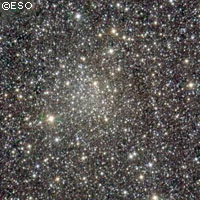International team to use new technique to detect exoplanets
Astronomers from the UK, Germany and the US have become the first to use a new data analysis technique that could enable them to find exoplanets - planets outside our solar system - in the future. Looking for exoplanets is difficult as the light that they emit is masked by the glare from their parent star. But astronomers have come to realise that they can observe exoplanets in special circumstances, for example at the point in an exoplanet's orbit when it is behind its parent star. Planets in close proximity to a star are also difficult to observe due to the 'diffraction limit' - the limitation on the spatial resolution of an optical telescope. Even the very best telescopes struggle: as light passes through the aperture it diffracts, leading to the presence of light and dark concentric rings around high-resolution images of stars and other objects. These concentric rings are known as 'Airy rings'. The international group of astronomers has made use of these Airy rings to distinguish the spectrum of 'companion' objects such as exoplanets from the glare of the parent star. The technique enables a spatial resolution 100 times higher than what is possible using traditional techniques. The method involves establishing how the Airy rings grow as images are captured at increasing wavelengths. Companion objects can be detected when a bright area remains in the same place as the wavelength changes. Subtracting the part of the image containing the spreading rings leaves behind an image of the companion object. The method has already been used in conjunction with the European Southern Observatory's Very Large Telescope, enabling the team to distinguish between stars 48 light-years away. The exercise led to the discovery that the star AB Doradus C, previously thought to be a brown dwarf, is in fact a red dwarf. The next step will be a hunt for exoplanets. First the development of extreme adaptive optics instruments must catch up with the team's new techniques. Once the next generation of instruments are ready, they will be used with existing ground-based telescopes to increase image contrast and allow astronomers to make out distant objects.
Countries
Germany, United Kingdom, United States



